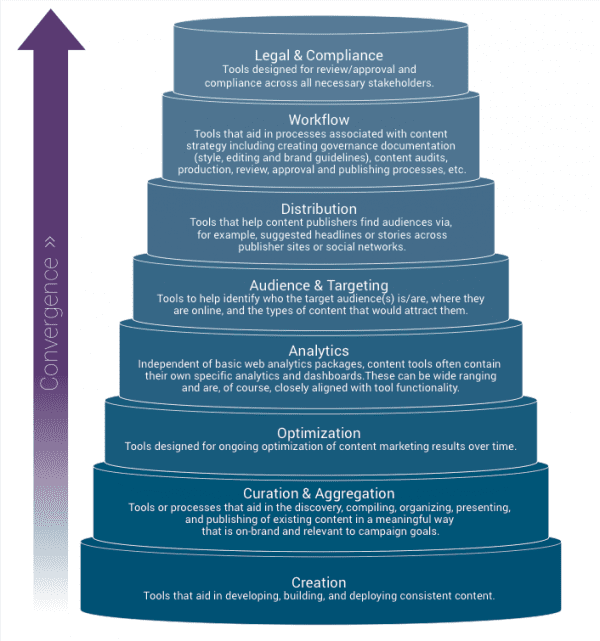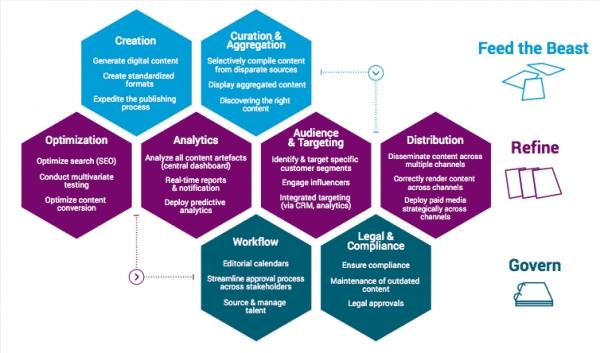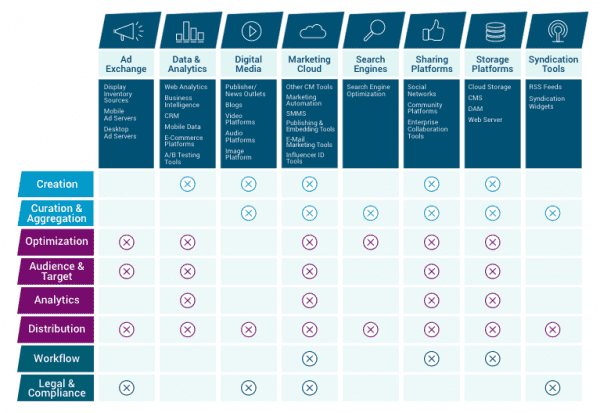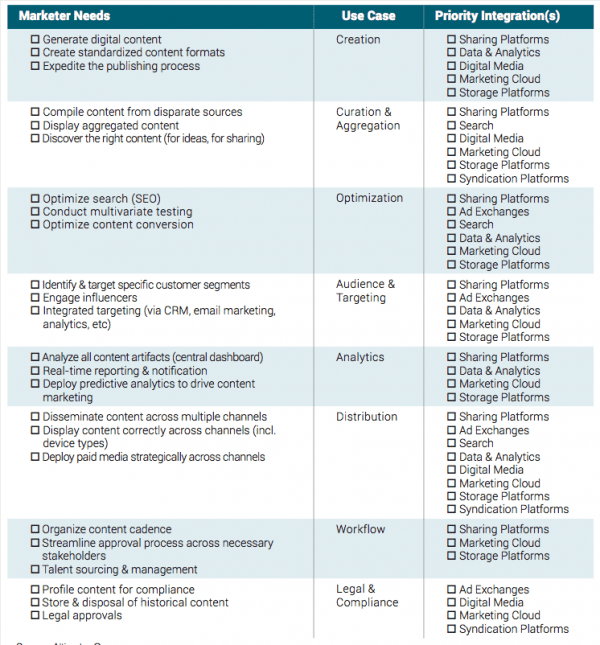Can content marketing software ease the pain?
A new technology report by Rebecca Lieb at Altimeter has just been launched evaluating the software landscape for content marketing. You might read that as a “not for me” - doesn't sound too exciting at first glance, but we'd suggest that it might be worth re-thinking that stance.
The $44Bn market: Content marketing is big and complex
Now valued at a whopping $44Bn, the creation and promotion of customer or branded content remains on a huge growth trajectory, and yet Altimeter finds 70% of marketers lack a consistent or integrated content strategy - marketers still have a scattergun approach to content.
“Content is the atomic particle of all marketing” Rebecca Lieb
[note: Seth Godin also said content was marketing’s last stand about 2–3 years ago]
The reality is that marketing is now a complex process, it involves multiple stakeholders throughout the organisation, outside agencies and suppliers, and multiple channels and media. It’s the growing channel and media complexity, driven by consumer behaviour changes, in turn increasing the adoption of content marketing, has given rise to a large, complex, and highly disparate content marketing landscape. A landscape which requires more intelligent tools, software that enables all, or elements, of the content marketing process from creation to promotion and governance, to be managed.
Software options appear to make the complex more complex?
If we accept that content marketing is complex, then the current suppliers of software appear to make it much worse, that’s according to Altimeter - though I’d agree for what it’s worth.
What’s creating the issues and driving the need to change?
- Organisations lack a cohesive, coherent, strategic approach to content
- Creating and publishing content is hard, unrelenting work
- Lack of ownership by one team or division
- Lack of integration with other softwares and processes
- Misaligned buyer needs vs planned investments
- A tangled software landscape
Altimeter’s focus in the report is that software is the key to making the complex much simpler, yet currently there are too many solutions (110 suppliers), many of them small players all whilst the market itself is evolving. We are however seeing the giants, such as Adobe and Salesforce, changing (and buying) the market to create ‘marketing clouds’ - is this the future?
“By 2016, there will be ‘content stack’ offerings in the marketplace — end-to-end solutions akin to ad stacks.”
Altimeter believes that the content marketing tool landscape will begin to consolidate by 2016, that there will be “content stack” offerings — end-to-end solutions akin to ad stacks. Currently, no single supplier has an end-to-end solution. Logically we might accept that a few will partner, merge, acquire, and/or collaborate to create a total solution.
Altimeter Group’s Content Tools Stack Hierarchy

How to define your content marketing tool stack
Much like any other area of business and software, Altimeter Group approaches the content marketing tools problem from the perspective of marketing challenges and needs first, highlighting three steps to best determine your content marketing tool stack:
1) Determine your content marketing use cases.
Altimeter highlights eight over-arching use cases that fall into one of three phases of scaling complexity. Feed the beast might be how it feels for many yet to some extent we’re all in a process of refining and bringing in a robustness, forming roles outside of creation, such as analytics. The third phase of maturity is around governance, a phase where teams grow and regulatory requirements need to be met.
Three phases of maturity

The Eight use cases
Altimeter recommend that we’re certain to solicit stakeholders and end-users for requirements, input, and collaboration.

“You can’t retrofit activities to the tool; you have to align the tool with your activities.” Kristina Halvorsen Founder & CEO, Braintraffic
2) Plan for integration and evolution.
Altimeter highlight that future-proofing software selection requires a plan, and that integration is tripartite:
- Systems integration. Such as CRM, data and analytics
- Integration with the organisation including internal communications and corporate intelligence
- Integration with structure, workflow and processes - including internal and external teams or partners
Common integration points vs use cases

3) Identify and prioritise suppliers based on those use cases.
Much like any other process of vendor selection. The above two steps enable the priorities and filters to be easily understood and so a checklist created.

Other key areas of best practise that we’d recommend would be enabling scale and phasing development for speed. Of course, the big one is always finding and developing the right team - all the software power in the world simply cannot replace people.
Want to know how those 110 suppliers (or vendors) compare? Check out page 15 of the report right here.











